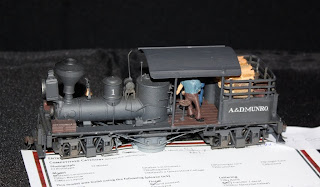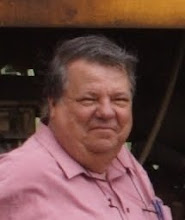It was a most successful event with some 70 delegates, traders and presenters attending.



Papers presented on Saturday included – “Prototype Freelancing” presented by Gavin Hince, Editor of “Narrow Gauge Downunder” magazine; “The Narrow Gauge World of Suagr Cane” by Dr Lynn Zelmer; “Considerations for Scratch Building” by Phil Badger; “Backdrops – Why and How” by Ian Fainges and “Master Mould Making & Casting” by Dr Grant McAdam to name just a few.
I took a group of delegates on a conducted tour of the Museum’s Collection Stores, not normally seen by the public, during the lunch break.
Also on Saturday voting took place for the models in the various categories for the modelling competitions. The Saturday session finished at 5:15 pm when delegates retired to the Museum’s Trackside Café (formerly the Railway Workshops Dining Room – opened in 1912). Everyone enjoyed some pre-dinner drinks and a chat before sitting down to an excellent dinner served up by the Museum’s caterers – Heritage Catering.

The awards for the various modelling competitions were presented to the respective winners before dessert was served. It was a very convivial evening and well worth the cost.
Sunday saw a continuation of the many papers presented by narrow gauge modellers. Dr Grant McAdam presented a talk about “The Lesser Known Narrow Gauge Railways of England and Wales”; “An Introduction to Computer-based Modelling Techniques” was presented by Dr Lynn Zelmer and Clinics were presented by Craig Mackie (a New South Wales modeller but we won’t hold that against him) “How to Build an Outhouse using Styrene” and “Sculpting” (miniature figures) by Ian Fainges rounded out the day.
I again took a group of delegates on a tour of a part of the Museum not seen by the public – the Bogie Shop – where they saw a Hunslet 4-6-0T from World War I amongst other things.
During the afternoon, I assisted Queensland Railways Workshops staff on a behind the behind the scenes tour of the Railway Workshops. We showed those on the tour B13, C19, C17, B18¼ and B15 Con locomotives that have been in store since 1992 and not available for viewing by the public.
Altogether it was an excellent weekend. Delegates were impressed with the Workshops, the organisation of the event and the papers as well as the food. Morning and afternoon teas were provided as well as lunch each day.

On Monday, which was not only Easter Monday but also ANZAC Day, a number of delegates attended the ANZAC Day service at the War Memorial in the Museum grounds. This Memorial was paid for by Railway Workshops staff in 1919 and since then a remembrance service has been held every year. Today it is organised by the Ipswich Branch of the Returned Servicemans’ League, Railway Sub-Branch in conjunction with the Museum. This year the attendance was approaching 1,000 people. The War Memorial at Ipswich Railway Workshops is one of only two on private property in Australia.
On Monday afternoon, John Dennis and his wife, delegates from Melbourne at the Narrow Gauge Convention, visited my home to view some of the historic research files I hold about narrow gauge railways in Australia as well as to view our On30 layout in The Shed.
To round out a great weekend, Raymond and I did some more work on our layout today (Tuesday) which was a public holiday in Queensland. Raymond has wired up and installed another three points. Slowly but surely.








